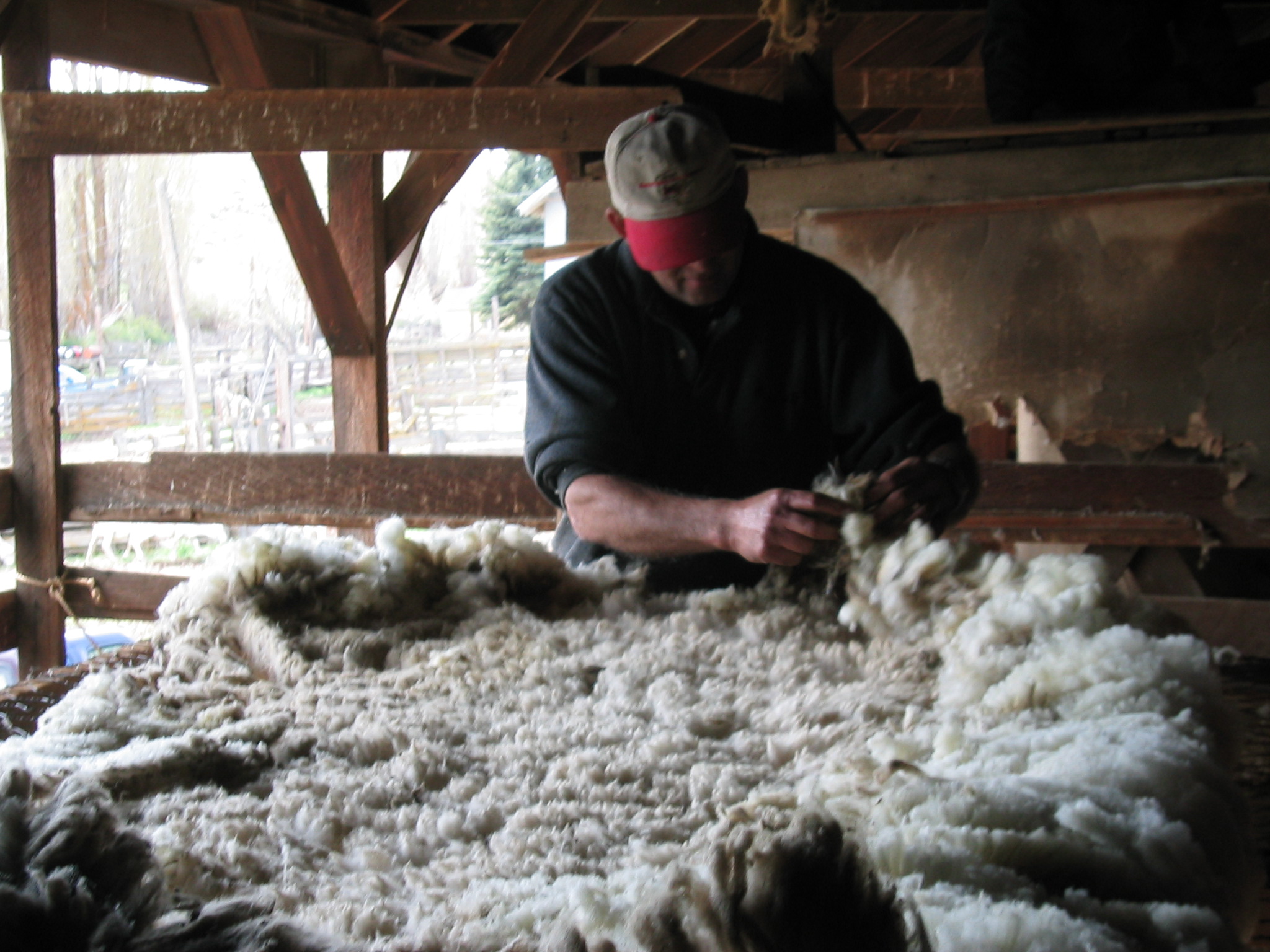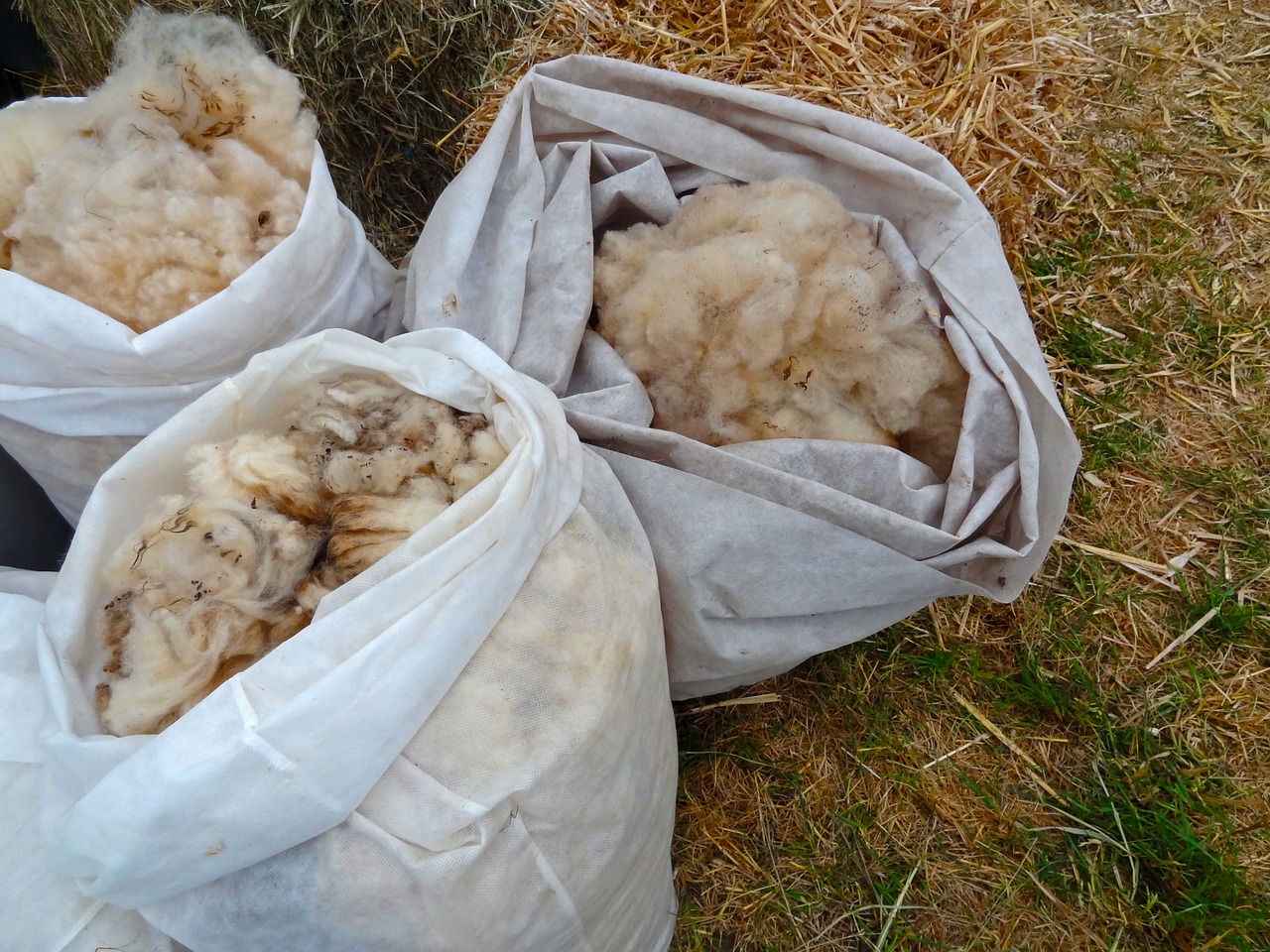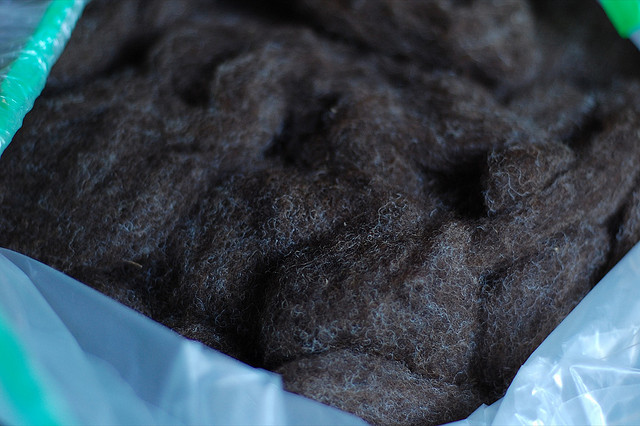It’s spring wool shearing season, and if you’re lucky you might just snag a newly shorn fleece! But what next? First of all, it’s okay to spin from raw wool if you want to. Things might get a little messy, but that’s part of the fun of working with natural fibers — it's what we call spinning “in the grease."
But, if you don’t want to deal with spinning sticky wool, or if you want to use processing equipment like a drum carder, or you’re just plain grossed out by wool straight off the sheep, you’ll need to wash it before spinning.
Skirting
High-quality fleeces for sale at a fiber festival or shop will have been skirted, but it’s always best to take a good look yourself. Skirting refers to removing very damaged, discolored, or cut sections of the fleece that are not suitable for processing. Every fleece is different, but even the cleanest fleeces from coated sheep have some not-so-great sections.

Photo via Imperial Stock Ranch
Spread your fleece out on an old sheet or tarp and take a good look, picking out clumps of hay, burrs, or poo. You can’t get it all out at this stage! Note that color variations in a fleece are normal, even desirable, but very yellowed or brittle sections should be removed. You can always set some aside and come back to it later to see if it can be salvaged for stuffing or other uses.
Washing
Things you’ll need:
- Hot water
- Laundry sink, large tub, or top-loading washing machine
- Few mesh lingerie bags
- Dish soap (Dawn is great)
- Rubber gloves (dishwashing gloves), used for fleece washing only
- Somewhere to dry the wool for a few days, like a sweater drying rack or a regular drying rack with an old sheet over it (to keep the shorter bits from falling through)
An important note:
Due to the dirt and manure, I would not wash fleece in the kitchen or anywhere else food is prepared. A laundry room, bathroom, garage or even outside is better. If you’re using a household washing machine, be sure to clean it out well afterward by running a hot cycle with vinegar or laundry soap before getting back to clothes.

The number one rule in washing raw fleece? DON’T FELT IT!
You may think that felting is caused by hot water alone, but that isn’t quite true - it’s the agitation in hot water that causes the fibers to stick and shrink. Hot water is necessary for cleaning wool, as it dissolves out dirt and lanolin. I like to use mesh lingerie bags (available lots of places, including household and dollar stores) to hold the wool so that you can get it in and out of the wash without too much hassle.
How to wash raw wool:
1. Soak the Wool
Fill up the sink or washer with HOT water and dish soap. The amount of soap depends on your fleece, but a few squirts per bagful is just fine. Swish the water and soap a bit to get it mixed, but only before you add the wool.
Wearing rubber gloves to protect your hands and arms, gently place a mesh bag or two of wool into the water. Hold them under the water without moving them around, until the wool is fully wet.
2. Let it Sit
Let the wool sit for about 30 minutes; the water will have cooled somewhat, but it should still be warm. If you let the wool sit in water that cools all the way, the lanolin will just re-deposit onto the fiber. The water will become quite dark and dirty!
3. Drain and Repeat
Drain the dirty water and refill with more hot water and another couple squirts of dish soap. Don’t let water run directly onto the wool! If you’re using a sink, you can push the mesh bags off to the side while you add more water, but with a washing machine you may need to gently lift the bags out into a washtub while you refill.
Place the bags back into the water and soak again. Depending on how dirty your fleece is, you might want to repeat steps 3 and 4.
4. Make Sure it's Bubble-Free
Refill with hot, clean water and soak to rinse out any bubbles.
5. Wring and Dry
If you’re using a washing machine, you can spin out the wool (as long as it doesn’t spray water into the wool while spinning!). Otherwise, gently press the bags of wool against the side or bottom of the sink so most of the water runs out. Don’t wring or twist the wool.
Now spread your nice clean wool out to dry; this process might take a few days, depending on the weather and humidity.

Photo via Laura Chau
Washing locks
Washing individual clumps or locks of wool is a good way to work your way through the fleece if you don’t have the space or inclination to wash it all at once. Follow the instructions above, but when you’re working with a small amount of wool at a time, you can use a sink or washing tub. If you can scoop out the locks with your (gloved) hands, you might not need to use a mesh bag, but it’s still good for extra safeguarding against felting. When in doubt, test-wash a small amount before jumping in!

Hi! Any ideas on how to use the fleece? Can it be spinned without a wheel? Thanks for the article!
Learning how to care and wash my fleece
Hi there, did all of the steps and it worked nicely, but it still stinks like sheep. Anything else I can do to removed the smell...? It's becoming a pillow so the thought of smelling that all night is not appealing. Thank you! Eve
This is great! I was just discussing this with my daughter.
Getting ready to wash freshly sheared wool from the lamb that will be in my new fiber art quilt. Thanks for the help.
interested in small cottage industry venture